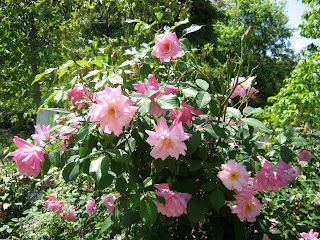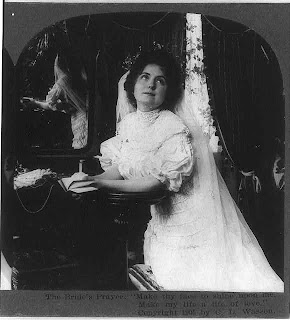Susan reports:
"Intrepid" doesn't begin to describe the character and life of
Ann Ford Thicknesse (1737-1834). Genteelly born, her father indulged her with an excellent education (she spoke several languages) and extensive music lessons. She soon displayed a rare talent for music and sang beautifully, as well as playing several instruments.
But while her father encouraged her in concerts for friends, he forbid her to perform on the stage. They quarreled so violently that she moved from home and into the house of a friend, announcing that she would support herself by her music. Her furious father had her arrested and hauled back home. Undeterred, she arranged a series of subscription concerts, and her father hired ruffians to disturb her first theatrical performance. Only the intervention of one of her aristocratic supporters permitted the show to go on.
Her concerts were a sensation, and made her a celebrity. Among other instruments, she played the
viola da gamba, scandalously (properly) positioning the viola between her knees. More scandal followed when she had her portrait painted by friend
Thomas Gainsborough (1727-1788 ), himself an amateur musician. Shown with her instruments, her pose – with her legs crossed at the knee like a man – shocked society almost as much as her independent, intelligent gaze looking to one side that ignored the viewer. Handsome though she was, there was clearly none of the melting, doe-eyed society beauty about Ann.
The Earl of Jersey was smitten, and proposed that Ann become his mistress for a sizable annual sum and the promise to wed her when his ailing wife died. Indignantly she refused, and in defense of the rebuffed earl's attempts to slander her, Ann published
A Letter from Miss F--D,
addressed to a Person of Distinction in 1761. In it, she argued that "a young woman may sing in public...or be a public singer, with virtue and innocence." Over 500 copies were sold the first week, and the letter was also published in the
Gentleman's Magazine. The earl's rebuttal,
A Letter to Miss F--d, was not nearly as popular.
After performing in London and in Bath, she traveled to Suffolk with her good friend Elizabeth Thicknesse, who sadly died soon after in childbirth. Six months later in 1762, Ann married her friend's widower, Captain
Philip Thicknesse (last seen in the TNHG
writing travel guides.) The match raised eyebrows: not only was Philip twenty years Ann's senior, but he drank, whored, gambled, and took laudanum to infamous excess. He was litigious, quarrelsome, and an open supporter of slavery, and his personality was so irascible that he was known as "Dr. Viper." He wrote ferociously and often slanderously, on subjects as wide-ranging as male-midwifery to fraudulent automatons.
Yet it was a most happy marriage for nearly thirty years. The couple traveled extensively through Europe. Their eccentric entourage included not only a parakeet, but a monkey who was dressed in livery and rode postillion before their carriage; Ann's personal luggage included her viola, two guitars, and a violin. She also began writing and publishing books of her own, including works on playing the guitar and glass harmonica, travel, a novel, and, in 1778, the three-volume
Sketches of the Lives & Writings of the Ladies of France.Undeterred by the French Revolution, Ann and Philip were traveling to Paris in 1792 when Philip suffered a seizure and died in Ann's arms in their carriage. Griefstricken, Ann buried him in Boulogne, but before she could return home, she was arrested as a foreigner and imprisoned for eighteen months. She was finally released by proving that she was no idle, unattached gentlewoman, but could support herself –– as a musician.
Returning to England, Ann continued to write and publish. In 1806, when she was 68, she was described as "the most singular, and if it may be added, the most accomplished woman of her day." How can we argue with that?
Click
here for more about Ann and one of her favorite instruments, the glass harmonica.
Above: Mrs. Philip Thicknesse, nee Ann Ford,
by Thomas Gainsborough, 1760, Cincinnati Art Museum
 Susan reporting:
Susan reporting:



































